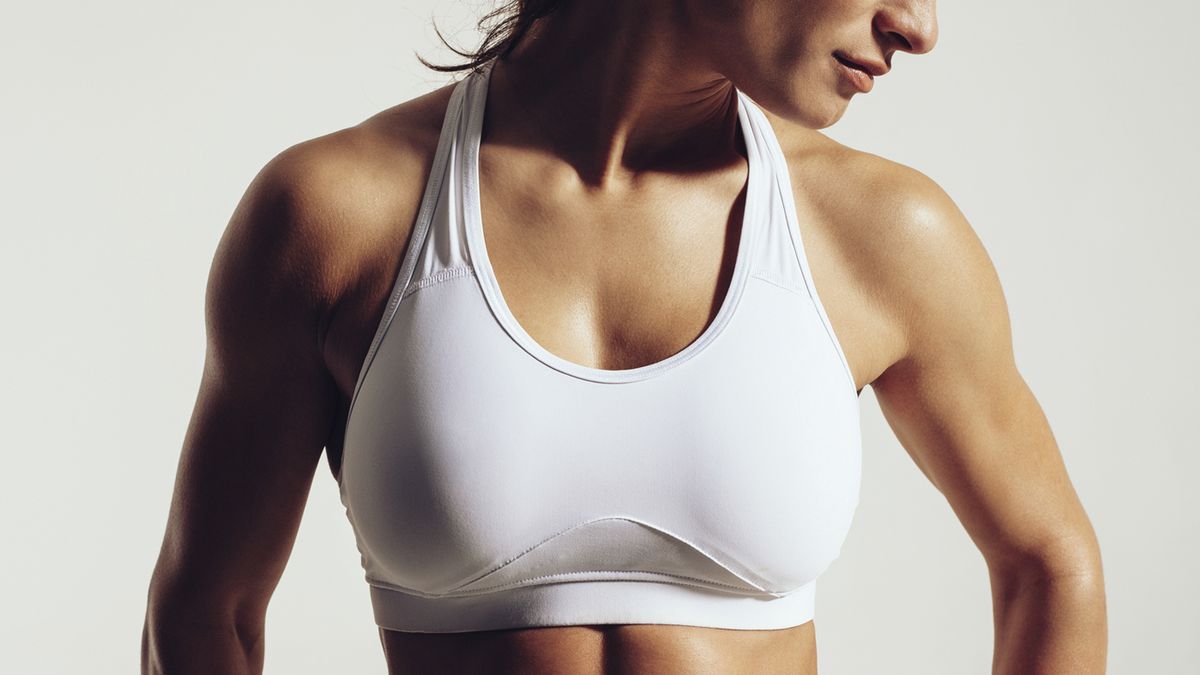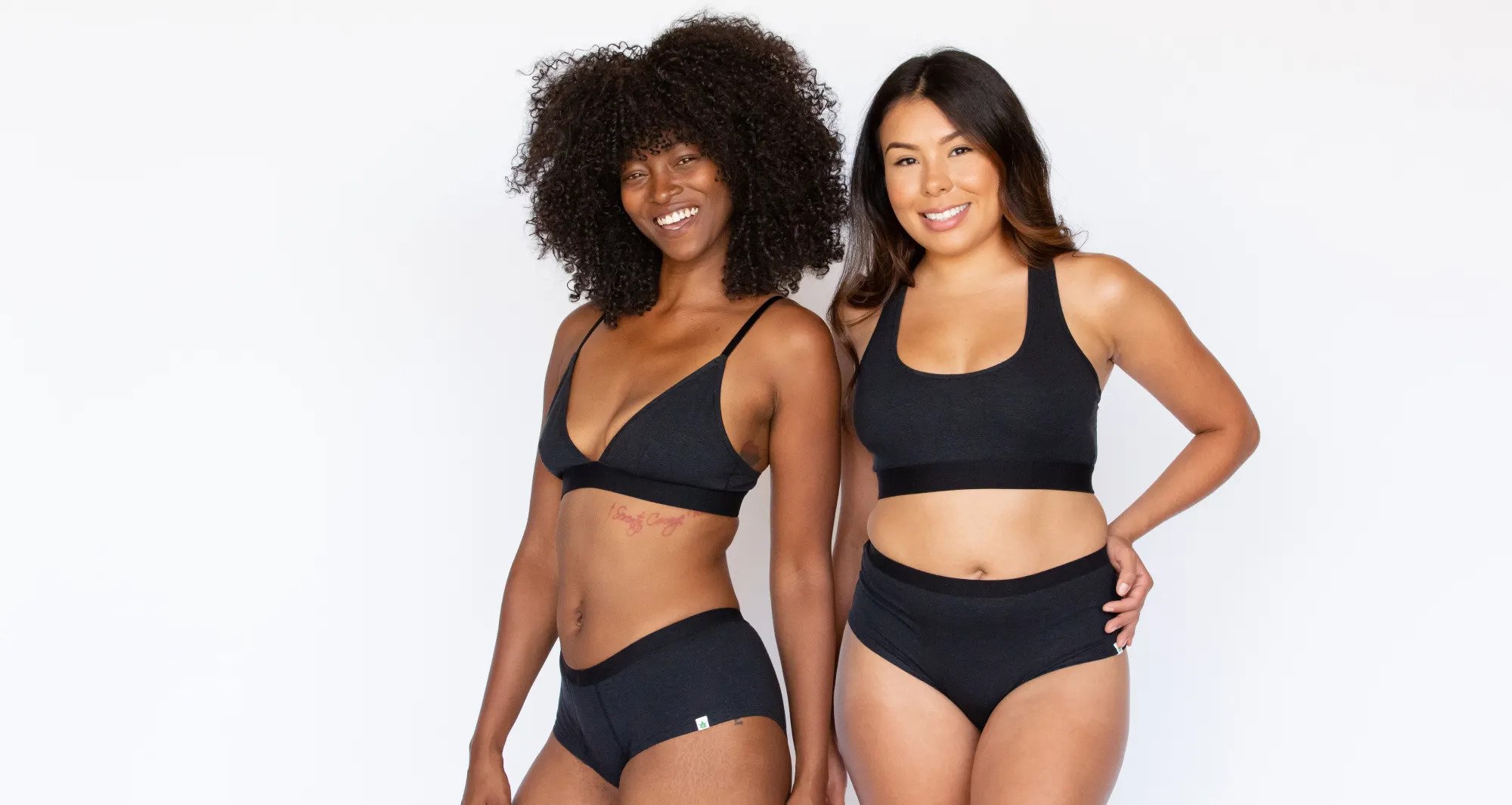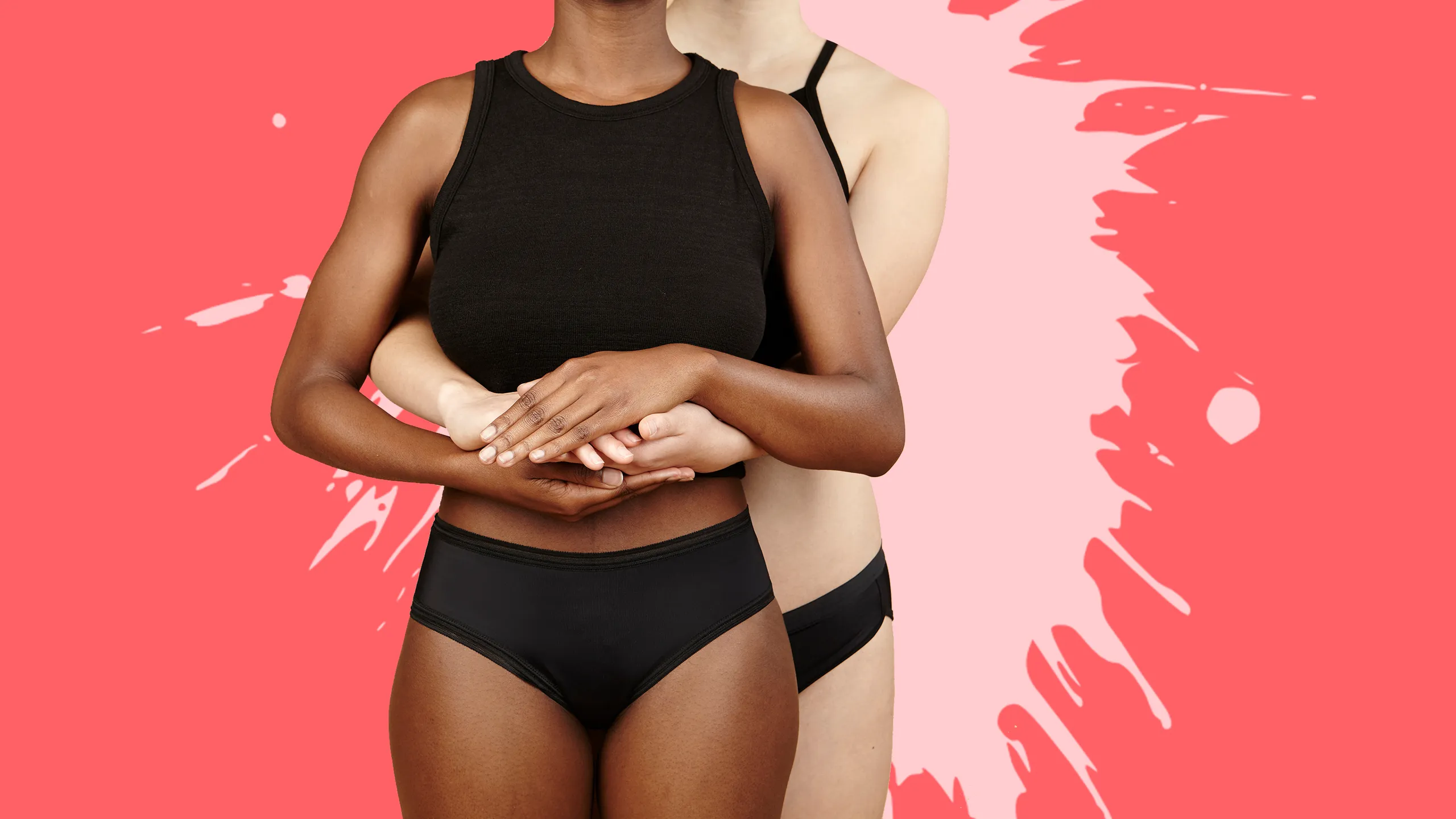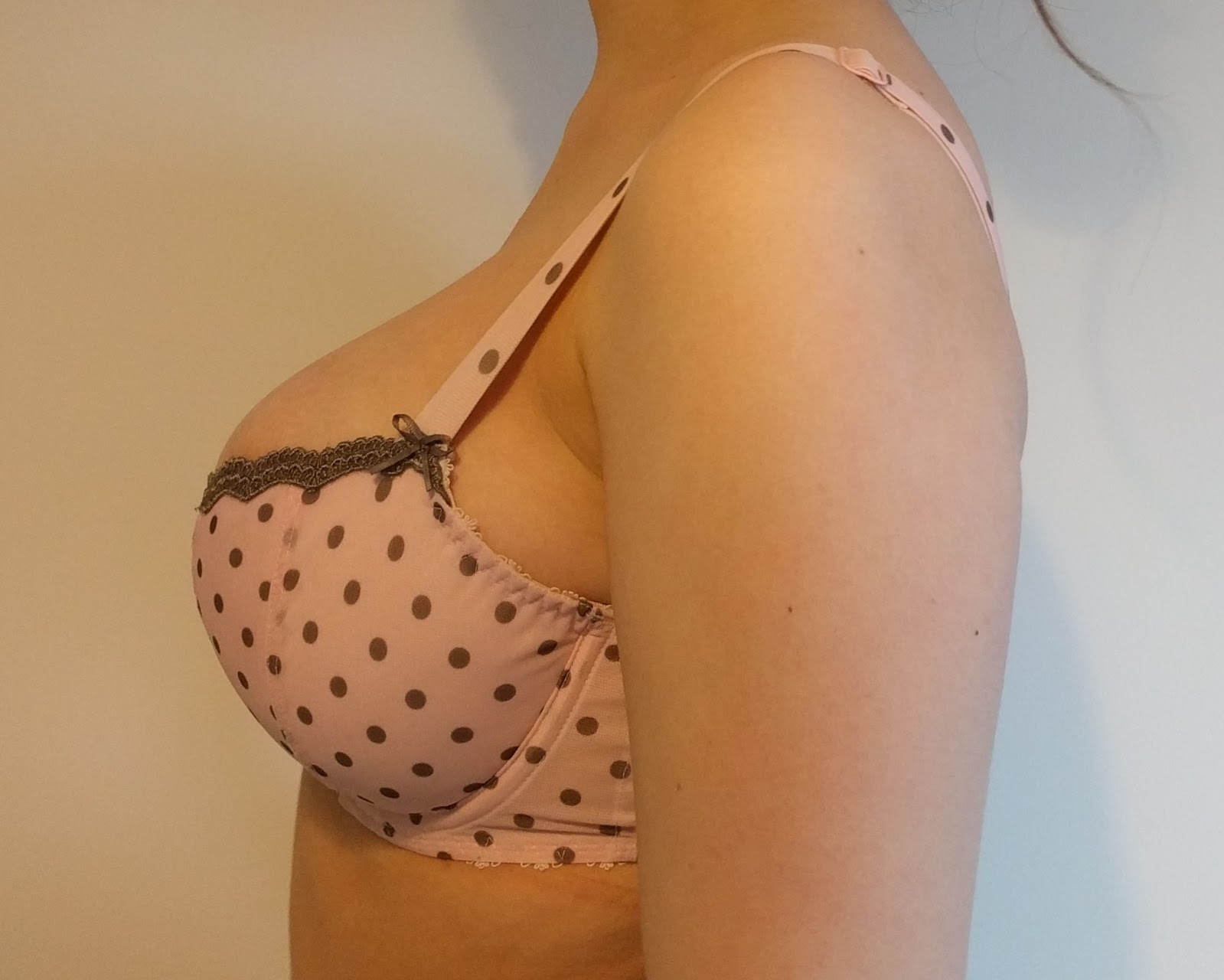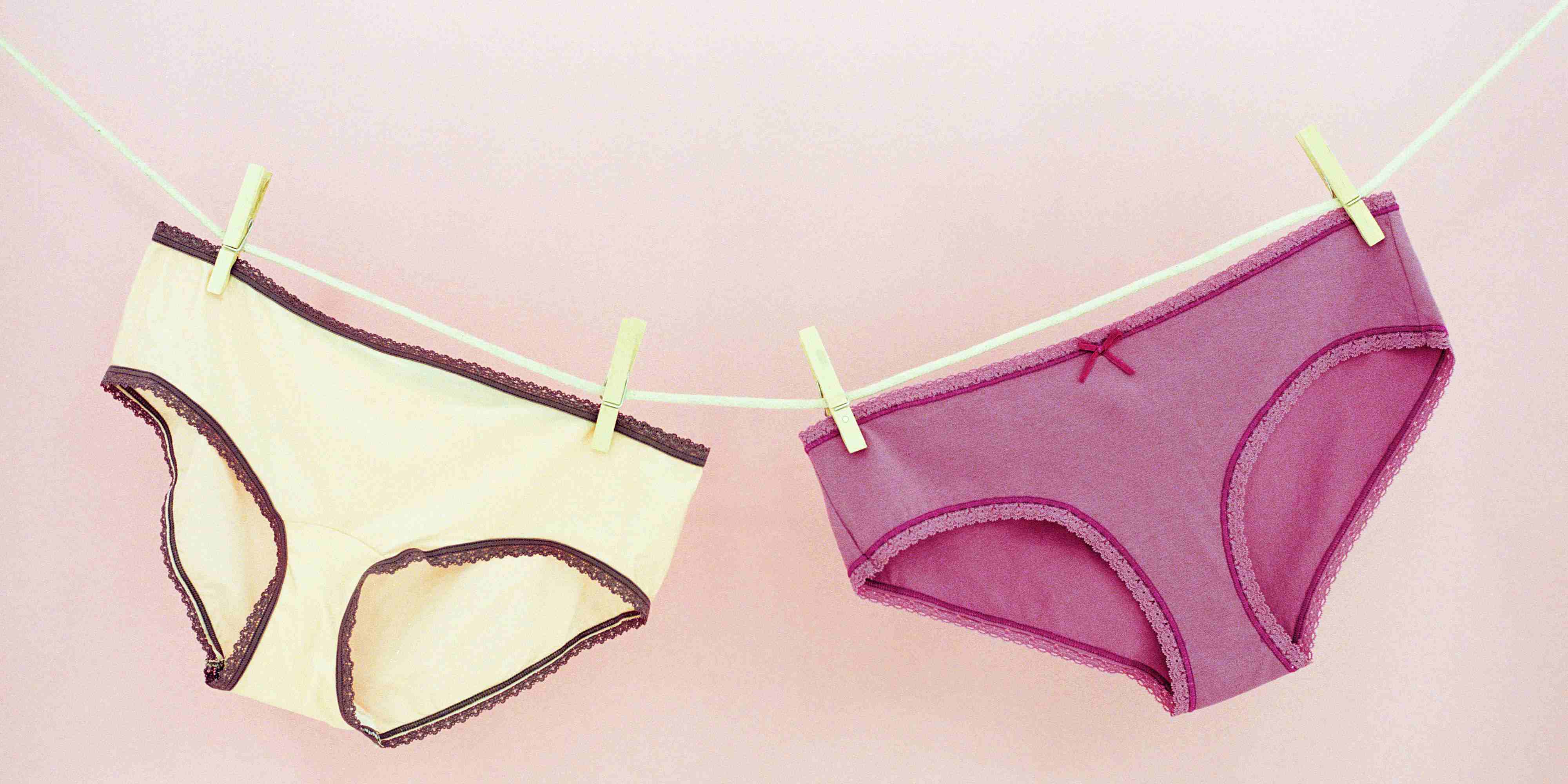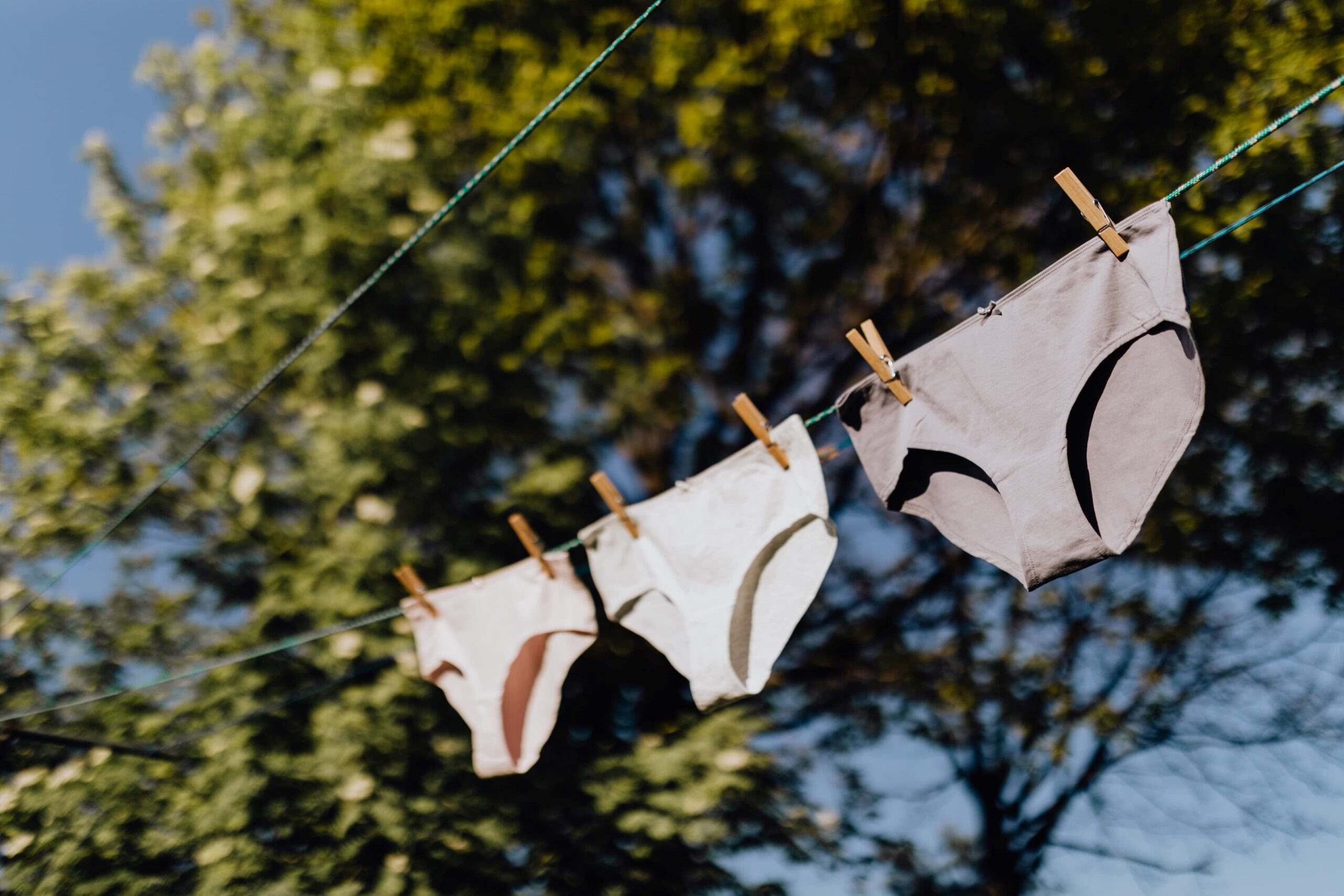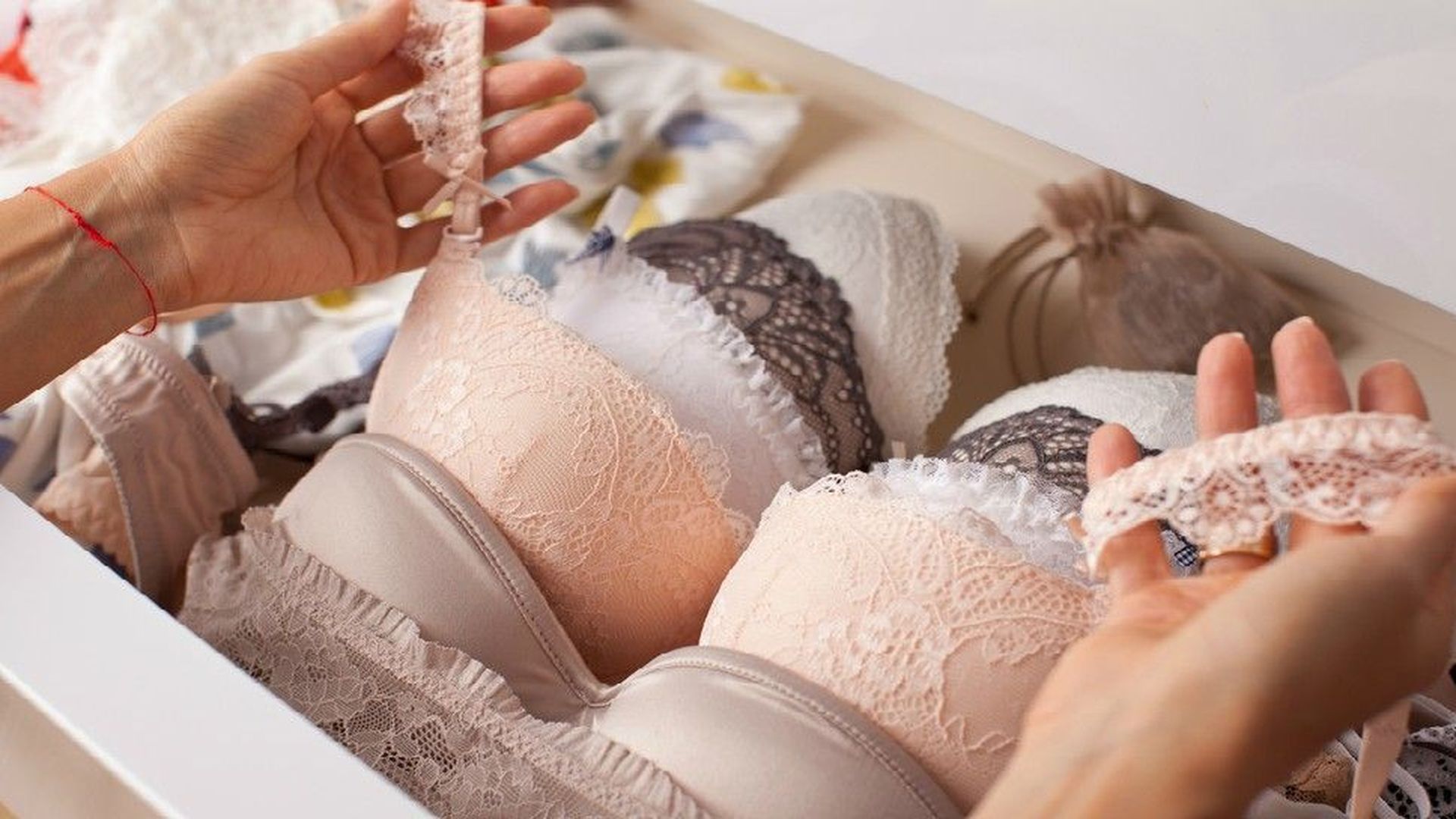Home>Women's Underwear>Bras>How Do I Determine My Bra Size
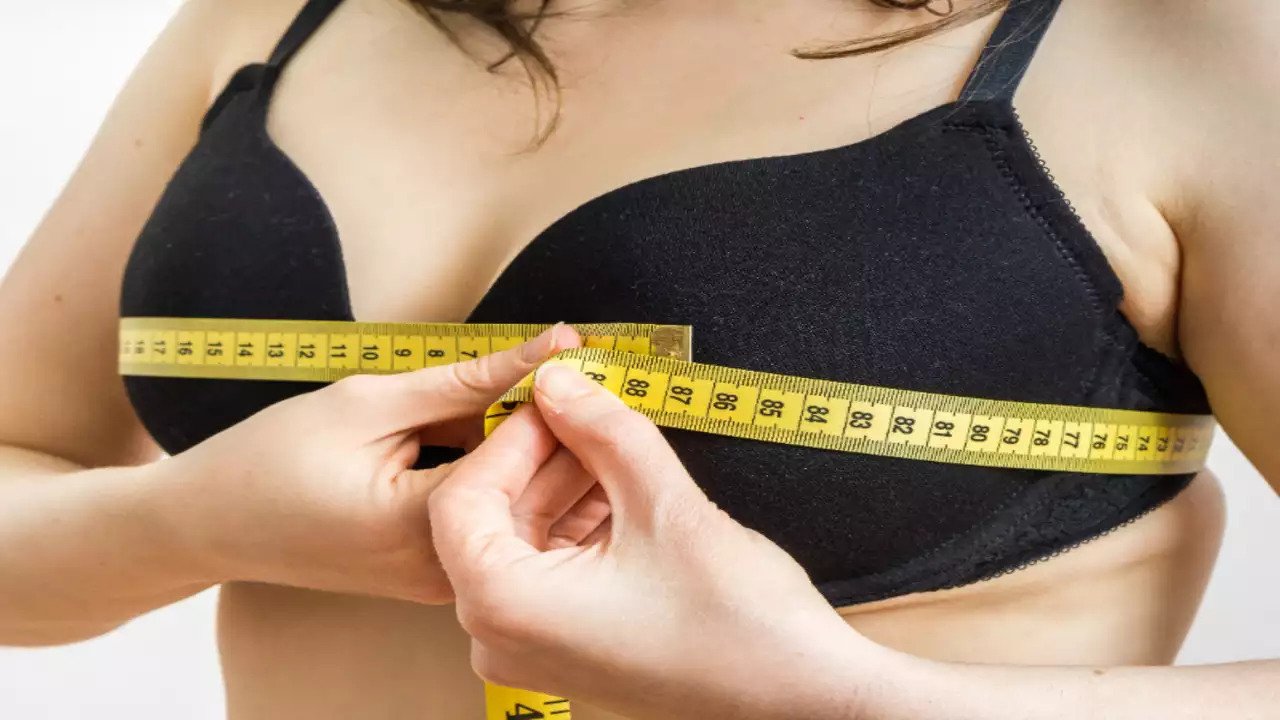

Bras
How Do I Determine My Bra Size
Modified: September 23, 2023
Find out your perfect bra size with our easy-to-follow guide. Discover the best bras for ultimate comfort and support. Shop now!
(Many of the links in this article redirect to a specific reviewed product. Your purchase of these products through affiliate links helps to generate commission for Under-tec.com, at no extra cost. Learn more)
Table of Contents
- Introduction
- Understanding the Importance of Finding the Right Bra Size
- Step 1: Measuring Your Band Size
- Step 2: Measuring Your Cup Size
- Step 3: Calculating Your Bra Size
- Factors to Consider for a Perfect Fit
- Common Bra Size Myths Debunked
- Trying On and Adjusting Bras
- Tips for Maintaining Proper Bra Support
- Conclusion
Introduction
Finding the right bra size is essential for every woman. A properly fitting bra not only enhances comfort but also improves posture and overall confidence. However, many women struggle with determining their correct bra size, often resorting to guesswork or settling for ill-fitting bras. This ultimately leads to discomfort, inadequate support, and potential health issues.
In this article, we will guide you through the process of determining your bra size accurately. We will cover everything from measuring your band size and cup size to calculating your overall bra size. Additionally, we will address common myths surrounding bra sizing and provide tips for properly trying on and adjusting bras. By the end of this article, you will have the knowledge and tools needed to find the perfect bra fit.
It’s important to note that bra size can change over time due to factors like weight fluctuation, pregnancy, or aging. Therefore, it’s a good practice to re-evaluate your bra size periodically to ensure optimal comfort and support.
Now, let’s delve into the process of determining your bra size and uncover the secrets to finding the perfect fit.
Understanding the Importance of Finding the Right Bra Size
Many women underestimate the significance of wearing the correct bra size. However, the truth is that a properly fitting bra can make a world of difference in terms of comfort, support, and overall well-being.
First and foremost, wearing the right bra size ensures optimal comfort. Ill-fitting bras can lead to uncomfortable pressure points, digging straps, and underwires that poke and prod throughout the day. By finding a bra that fits perfectly, you can bid farewell to these discomforts and revel in the feeling of a bra that you hardly notice is there.
Moreover, the right bra size provides essential support for your breasts. A well-fitting bra lifts and supports the breast tissue, reducing strain on the back, neck, and shoulders. This, in turn, can help improve posture and alleviate common issues like back pain and shoulder indentation caused by overly tight or loose bras.
Additionally, wearing the correct bra size enhances your overall appearance. A properly fitting bra provides the right amount of lift, shape, and support to enhance your natural curves. It can help create a more flattering silhouette, making your clothes fit better and boosting your confidence.
Furthermore, wearing the wrong bra size can lead to potential health issues. A bra that is too tight or constricting can restrict blood flow and lymphatic circulation, leading to discomfort and even impacting breast health over time. Conversely, a bra that is too loose or unsupportive may not adequately minimize breast movement, increasing the risk of stretch marks and sagging.
By understanding the importance of finding the right bra size, you can prioritize your comfort, health, and overall well-being. A perfectly fitting bra can transform the way you feel and look, allowing you to embrace your unique beauty with confidence and ease.
Step 1: Measuring Your Band Size
Measuring your band size is the first step towards finding your perfect bra fit. The band size refers to the measurement around your ribcage, just beneath your breasts. Follow these simple steps to accurately measure your band size:
- Start by wearing a non-padded bra or no bra at all. This will ensure that your measurements are not affected by extra padding or bulk.
- Stand in front of a mirror and hold a flexible tape measure snugly around your ribcage, right below your breasts. The tape should be parallel to the floor and not too tight or too loose.
- Take a deep breath and exhale, allowing the tape measure to settle into a comfortable position. Ensure that the tape measure is straight and not twisted.
- Take note of the measurement in inches or centimeters. This measurement is your band size.
It’s important to remember that band sizes come in even numbers, so if your measurement falls between two numbers, round up to the nearest even number. For example, if your measurement is 31 inches, round up to 32 inches.
Keep in mind that your band size may vary depending on the brand, so it’s always a good idea to try on bras from different manufacturers to find the most accurate and comfortable fit.
Now that you have determined your band size, you are one step closer to finding your ideal bra fit. In the next section, we will explore how to measure your cup size accurately.
Step 2: Measuring Your Cup Size
Measuring your cup size is the next crucial step in determining your ideal bra fit. The cup size refers to the volume of your breasts and is determined by the difference between your bust measurement and your band size. Follow these steps to accurately measure your cup size:
- Ensure that you are still wearing a non-padded bra or no bra at all.
- Stand in front of a mirror and position the tape measure around the fullest part of your breasts, typically at nipple level. The tape measure should be parallel to the floor and not too tight or too loose.
- Take note of the measurement in inches or centimeters. This measurement represents your bust size.
To calculate your cup size, subtract your band size (Step 1 measurement) from your bust size (Step 2 measurement). The difference between the two measurements corresponds to a letter of the alphabet, indicating your cup size.
Use the following chart as a reference to determine your cup size based on the difference:
- Difference of 0 inches (or 0 cm): AA cup
- Difference of 1 inch (or 2.5 cm): A cup
- Difference of 2 inches (or 5 cm): B cup
- Difference of 3 inches (or 7.5 cm): C cup
- Difference of 4 inches (or 10 cm): D cup
- Difference of 5 inches (or 12.5 cm): DD or E cup
- Difference of 6 inches (or 15 cm): DDD or F cup
- Difference of 7 inches (or 17.5 cm): G cup
- Difference of 8 inches (or 20 cm): H cup
It is important to note that cup sizes can vary slightly between brands, so it’s always recommended to try on different sizes to find the most comfortable fit for your breasts.
With your band size and cup size measurements in hand, you are now ready to calculate your overall bra size and explore factors to consider for a perfect fit.
Step 3: Calculating Your Bra Size
Now that you have measured your band size and cup size, it’s time to calculate your overall bra size. Combining these two measurements will give you a comprehensive understanding of your perfect fit. Follow these steps to calculate your bra size:
- Take your band size measurement (Step 1) and round it to the nearest even number. For example, if your band size is 31 inches, round up to 32 inches.
- Next, take your cup size measurement (Step 2) and refer to the cup size chart to determine the corresponding letter. Keep in mind that cup sizes can vary between brands, so it’s important to try on different sizes and styles to find the most comfortable fit for your breasts.
- Combine the adjusted band size (Step 1) and the calculated cup size (Step 2) to determine your bra size. For example, if your band size is 32 inches and your cup size is B, your bra size would be 32B.
It’s important to note that bra sizing is not an exact science, and you may find variations in sizing between different brands and styles. It’s always recommended to try on a few different sizes and styles to find the one that fits you best.
Remember, finding the perfect bra size is a process of trial and error. It’s normal to try different sizes and styles until you find the one that offers the best support, comfort, and fit for your unique body shape and breast size.
Now that you have determined your bra size, it’s important to consider other factors that contribute to a perfect fit, such as the shape of the bra, the type of straps, and the position of the underwire. These factors can further enhance comfort and support, ensuring that your bra feels like a second skin.
Factors to Consider for a Perfect Fit
While knowing your bra size is crucial, there are several other factors to consider for a perfect fit. These factors can greatly impact the comfort, support, and overall effectiveness of your bra. Here are some factors to keep in mind when shopping for bras:
1. Bra Style:
The style of bra can vary greatly, catering to different body shapes and personal preferences. Some common bra styles include balconette, plunge, push-up, sports bra, and T-shirt bra. Each style offers different levels of coverage, lift, and support. Experiment with different styles to find the one that suits your needs and enhances your comfort.
2. Underwire:
Underwire bras incorporate a thin, semi-circular wire beneath each cup, offering extra support and lift. The underwire should comfortably encase the entire breast and lie flat against the ribcage. Ensure that the underwire does not dig into your breast tissue or poke at the sides. If it does, try adjusting the cup size or opting for a different style that doesn’t use underwire.
3. Straps:
The straps of the bra play a significant role in providing support and preventing strain on the shoulders. Adjust the straps so they sit comfortably on your shoulders without digging in or sliding off. Some bras offer adjustable or convertible straps, allowing you to customize the fit based on your needs and outfits.
4. Band Snugness:
The band should fit snugly around your ribcage, providing the majority of the support. It should be parallel to the ground and sit horizontally across your back without riding up. A loose band can result in poor support, while a tight band can cause discomfort and leave marks on your skin. Make sure to adjust the band size accordingly to achieve the perfect balance.
5. Cup Shape:
Breast shape can vary from person to person, and finding a bra that complements your unique shape can greatly improve comfort and fit. Some bras offer different cup shapes, such as full-cup, half-cup, and demi-cup. Experiment with different cup shapes to find the one that provides the best coverage and support for your breasts.
By considering these factors when shopping for bras, you can ensure a perfect fit that enhances your comfort, support, and confidence. Don’t be afraid to try on different styles, sizes, and brands to find the combination that makes you feel your best.
Common Bra Size Myths Debunked
There are several common misconceptions about bra sizing that can lead to confusion and frustration. It’s important to debunk these myths and provide accurate information to ensure that women can find the right bra size. Here are some common bra size myths debunked:
Myth 1: The Band Size is the Same as the Bust Measurement
One of the most prevalent misconceptions is that the band size and the bust measurement are the same. In reality, the band size refers to the measurement around the ribcage, just beneath the breasts, while the bust measurement is the fullest part of the breasts. These two measurements are independent and serve different purposes in determining the correct bra size.
Myth 2: A Smaller Band Size Will Make Your Breasts Look Larger
Some women believe that wearing a smaller band size will make their breasts appear larger. However, this is not the case. Wearing an ill-fitting bra with a smaller band size can actually create the illusion of smaller breasts and result in discomfort and inadequate support. The key is finding a bra that fits correctly, providing the right balance of support and comfort for your breasts.
Myth 3: Cup Size is Constant Across All Band Sizes
Another misconception is that cup size remains constant across all band sizes. For example, some believe that a 36C is the same cup volume as a 34D. In reality, cup size is relative to band size. As the band size increases, the cup size also adjusts to maintain the same volume. Therefore, a 36C has a larger cup volume than a 34D.
Myth 4: You Only Need to Measure Your Bra Size Once
Bra sizes can vary depending on factors such as weight fluctuations, hormonal changes, and even different bra styles or brands. It’s important to reassess your bra size periodically and whenever you notice changes in your body. Feel free to measure yourself or seek professional assistance to ensure that your bra size remains accurate.
Myth 5: Only One Bra Size Fits Perfectly
Every woman’s body and breasts are unique, making it unlikely that only one bra size will fit perfectly. Factors such as breast shape, style preference, and individual comfort play a role in finding the ideal bra fit. It’s essential to try on different sizes, styles, and brands to discover what works best for you.
By dispelling these common bra size myths, we can empower women to find the right fit and enjoy the benefits of comfort, support, and confidence that come with wearing the perfect bra.
Trying On and Adjusting Bras
Once you have determined your bra size and considered the factors that contribute to a perfect fit, it’s time to try on different bras and make the necessary adjustments. The following tips will guide you through the process of trying on and adjusting bras:
1. Start with the Recommended Size:
Begin by trying on bras in your calculated size. This will give you a baseline to work with and help you understand how different styles and brands fit in relation to your measurements.
2. Assess the Band Fit:
Put on the bra and hook it on the loosest set of hooks. The band should feel snug and sit horizontally around your ribcage. It should be firm enough to provide support without feeling overly tight or restrictive. Remember, the majority of the support should come from the band, not the straps.
3. Check Cup Coverage and Shape:
Look in the mirror and assess the coverage and shape of the cups. The cups should fully encase your breasts, without any spillage or gaps. The shape should be smooth and natural, with no wrinkling or puckering. If the cups don’t provide enough coverage, try a larger cup size. If they feel too roomy or cause wrinkling, consider a smaller cup size.
4. Adjust the Straps:
Adjust the straps to ensure a comfortable and supportive fit. The straps should sit securely on your shoulders without digging in or sliding off. You should be able to slide two fingers between the straps and your shoulders. If the straps feel too tight, loosen them slightly. If they feel too loose, tighten them for better support.
5. Test Different Styles and Brands:
Don’t be afraid to try on bras in different styles and brands. Each may offer a slightly different fit and level of comfort. Experiment with various styles such as T-shirt bras, balconettes, or sports bras to find the ones that suit your needs and preferences.
6. Make Adjustments as Needed:
If you find that a bra doesn’t fit quite right, don’t hesitate to make adjustments. Try a different band size, cup size, or style to see if it makes a difference. Remember that everyone’s body is unique, so it may take some exploration and trial and error to find the bras that offer the best fit for you.
By following these tips and being patient with the process, you can find bras that provide the comfort, support, and confidence you deserve.
Tips for Maintaining Proper Bra Support
Proper care and maintenance of your bras are important for ensuring long-lasting support and comfort. Follow these tips to maintain the proper support of your bras:
1. Rotate Your Bras:
Rotate between different bras throughout the week to give them time to regain elasticity and shape. Wearing the same bra consecutively can lead to the stretching out of materials, reducing the support they provide.
2. Hand Wash or Use a Delicate Cycle:
Hand washing is the gentlest way to clean your bras and maintain their shape. If using a washing machine, place bras in a mesh laundry bag and use a delicate cycle with mild detergent. Avoid using bleach or fabric softeners, as they can damage the fabric and elastic of the bras.
3. Air Dry:
Avoid using the dryer, as the heat can cause bras to lose their shape and elasticity. Instead, lay bras flat or hang them to air dry. This will help preserve the integrity of the materials and maintain proper support.
4. Store Properly:
Store your bras in a designated drawer or hang them on a bra hanger to prevent them from losing their shape. Avoid folding bras in half, as this can lead to bending of underwires and distortion of cup shape.
5. Adjust Straps and Hooks as Necessary:
Regularly check and adjust the straps and hooks of your bras. The straps may stretch over time, so tighten them as needed for proper support. Use the outermost set of hooks when the bra is new, and gradually move to tighter hooks as the bra stretches with wear.
6. Replace Bras Regularly:
Bras have a natural lifespan and will eventually lose their support and shape. Generally, it is recommended to replace bras every 6-12 months, depending on how frequently they are worn and washed. Pay attention to any signs of wear, such as stretched out bands, underwires poking through, or cup fabric that no longer provides adequate support.
By following these tips, you can prolong the lifespan of your bras and maintain the proper support they offer. Taking care of your bras ensures that they continue to provide the comfort and confidence you expect.
Conclusion
Finding the right bra size is a journey that requires patience, trial, and error. By accurately measuring your band size and cup size, you can calculate your overall bra size and set the foundation for a perfect fit. However, it’s important to remember that bra sizing is not an exact science, and individual factors such as breast shape, style preference, and personal comfort play a role in finding the ideal fit.
Throughout this article, we have debunked common bra size myths and provided tips and guidance for trying on and adjusting bras. We have emphasized the importance of considering factors such as bra style, underwire placement, strap adjustments, and cup shape for optimal comfort and support.
Additionally, we discussed the significance of maintaining proper support by rotating bras, hand washing or using a delicate cycle, air drying, and storing bras correctly. These practices help extend the lifespan and effectiveness of your bras, ensuring lasting comfort and support.
Remember, your bra size may change over time due to various factors, so it’s essential to reassess your size periodically and whenever you notice changes in your body. Don’t be afraid to try different brands, styles, and sizes to find the ones that fit you best and make you feel confident and comfortable.
Ultimately, finding the right bra size is about prioritizing your comfort, support, and overall well-being. A properly fitting bra enhances posture, reduces discomfort, and boosts confidence. So, embrace your unique shape, explore different options, and celebrate the power of a well-fitting bra.
